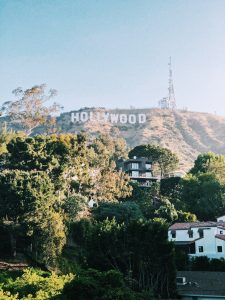A Buddhist life
I am a Buddhist but I confess I know little about my religion. My travel to local temples is a start to my path of enlightenment as I take a step into the life of a monk, exploring themes of religious persecution, religious influence, and the battle between technology and the mind. I digress beyond the typical day, and follow issues that matter today. This life is no ordinary life.
Walking towards the temple you can imagine you are taking the last of the 3,000 flights of stairs to get to the mountain peaks somewhere off in Asia. The tranquillity of the area is welcoming yet strangely eerie. But you continue. You are on a path to enlightenment, trying to understand the workings of this soundless and peaceful religion.
In many ways, it’s breaking the boundaries. Temples are resurrected in mountains to obtain seclusion and isolation from the rest of society. Especially today, there is too much noise and too many distractions. To allow the monks to focus on their observations, they have moved up, which means devotees like me must follow them.
I feel lucky that in a liberal society like Australia, religious freedom has allowed the presence of religion and its people to live side-by-side. Walking down the streets of Cabramatta in Sydney, you will find no shortage of temples. On one side, there is the Thai temple, across from there, you have the Chinese, and five houses down you have the Vietnamese.
After the Vietnam War, Australia received a mass immigration of Vietnamese fleeing the new communist rule. The Vietnamese diaspora is located all around Australia with prominent communities in South Australia, Sydney and Melbourne.
In Melbourne, a pillar of the Vietnamese community is Quang Minh Temple with Venerable Thich Phuoc Tan as the leading abbot. Quang Minh Temple could be described as one of the biggest Vietnamese temples outside of Vietnam.
Walking up to the temple, you are faced with this building looming ever so large. Its roofs are curled just as you imagined in those Kung Fu movies. The tiles are shining in the sun and the sheer size of the building amazes you.

The symbolic structure is designed so you are looking upwards towards the ‘light’ rather than front on or down to the building. It definitely puts you in your place.
Following down the rocky path you’re led to the front of the temple facade. “Chua Quang Minh” appears in bold writing on the roof.
From this point of view, you can see five wings coming off the roof. Buddhist figures are covered in the garden and stairs lead up to the grand Buddha hall.
The temple is on the edge of the hills which overlooks the Maribyrnong River, slowly making its way towards Melbourne CBD.
To one side of the temple you have the entrance gate guarded by two stone lions and, to the other side, there are two giant Buddhist statues.
The first is of a woman standing in the middle of a pond on a lotus flower. Her position is poised yet authoritative and her dress is covered in white marble. The sun hits her body but it’s the light in between her clasped fingers which appears as if she’s creating light from her hands.
The second large statue is what it is, a fat Buddha smiling. He assumes a lotus position, the legs are crossed and his chest is bare. He has children climbing on him, smiling and fooling around. When looking at him, you can’t help but give a smile.
“Nam Mo A Di Da Phat”, I say, as I pass a nun dressed in orange monastic robes, my hands clasped together as I give a bow from my upper body.
“A Di Da Phat,” she replies. The phrase itself is also used as a mantra and to represent Amitabha, the principle Buddha in Pure Land Buddhism.
You will find that monks and nuns are dressed in orange robes, and are also notable for their shaved head, a symbolic action to embody their teacher, Buddha.
As I walk up towards the main hall I pass a cauldron, filled to the brim with sand, ash and the remnants of the burning incense that remain. As you walk into the hall the ceiling rises above creating a massive hall. I hear chanting and in the middle of the hall sit a circle of monks.
“Gong… Clock… Clock…. Gong”. The unmistakable sounds of the wooden stick hitting the singing bowl is exemplified through the concrete walls of the hall. Above them looming upwards is Buddha sitting on the lotus throne.
The magnificent being that he is fills the room with his aura. The sound of chanting and the smell of incense are in the background, bringing your mind and body to peace and serenity.
Once you step into the room, all you focus on is Buddha. Laid before him on the altar are the offerings of fresh fruit and flowers.
Established in 1981, the temple is a centre for the Vietnamese community in Melbourne. It’s a place to practise religion but also it was built to provide a sense of community for the Vietnamese as they lost their identity and country after the Vietnam War in 1975.
The temple has seen many successions of abbots and the Venerable Tan was officially appointed to the position in 1997. Venerable Tan practices and teaches Pure Land Mahayana Buddhism, a branch of Buddhism practised by most if not all Vietnamese people.

“Quang Minh Temple is very much a cultural and community centre,” Venerable Tan says. “It is not a temple in the traditional sense where it is mainly a spiritual centre. The temple also plays as an educational institution for the community.”
When I raised the question of stereotypical comments made towards the practice of Buddhism, Venerable Tan was quick to point out that the idea that monks live a hermit life is a huge error in judgement. He explains that monks study for their lifetime and the study is “quite intensive”.
“It is not just a fix set of beliefs and you follow the scripture and that’s enough for a monk. It’s an ongoing process for a monk to continue his observations. To confine oneself in a room and purely concentrate on prayer and meditation is not what a monk practises,” he says.
It is important to note that Buddhism is about the teaching of balance and harmony with all life. For a monk to go beyond this into the extremes is no longer what Buddha had taught.
Gautama Buddha, known simply as Buddha, once said: “With the string too tight it will break, if too loose, they will not sound. Therefore neither too tight nor too loose, they will sound just right”.
From there Buddha set foot on the middle way.
As Albert Einstein described, Buddhism can also take the form of a science. In the development of science and the modern society, religion too has come along quite well.
But Venerable Tan does not shy away from the challenges it faces.
“In the modern context, this institution is always aware of issues that arise around the world and with a partnership with the community we come together to raise awareness and aid in any way we can,” he says.
“Such issues could be from animal rights to advocating for environmentally friendly practices.”
As a community-oriented institution, the temple is “combatting issues that young generations face in a modern wealthy society, and the nature of all these problems are somewhat challenging”.
The temple works alongside lay members and people of other faiths to broaden their knowledge to better connect with the community.
Buddhism, much like any other religion, has the aspect of rituals, customs and self-identity. The core practice is the observation of oneself and the environment through meditation.
Thich Phuoc Tan explains: “The monks look into their mind to see the influences and effects between us and the environment, or our neighbours or the community to continuously adjust oneself in order to harmonise with society”.
Buddhism at its core is the teaching to reach enlightenment. The aim is to better others and to lead them towards enlightenment, too.
“The concept of Nirvana – heaven — is not for the individual’s happiness but it is very much of our realisation, understanding and purification of our actions with the positive affect to society,” Venerable Tan says.
Similar to science, the monks research, learn and finally advocate for change. Change for a respectful community to coincide with the other life, and a respect for religious freedom and to be able to have a platform to ask for change without discrimination or persecution.
In some ways, this is the politicisation of religion which has become a platform for people to speak up. But it is the government that has enforced this change into their practice.
Thich Phuoc Tan believes that people should be given a choice to actively practice their religion without persecution. He discusses the politicisation of religion in countries such as China and Vietnam.
“Each society has its own values, but the governments need to be aware of how their policies and actions affect the wellbeing of their citizens,” he says.
“It is understandable that as societies grow larger with difference ethnic groups there will also be a growth in complication. There will be more diverse ethical, political, cultural and religious views. But it should be an ongoing process for the government to reassess their values.”
It’s surprising to hear the tone of the abbot’s voice. He speaks with no reservation or hesitation. He was not forceful in his words but gentle. To be able to say that of a country he had to flee and to a country that continues to persecute his colleagues takes a very high amount of mental power.
For Thich Phuoc Tan to calmly speak and empathise for what the Chinese government is doing isn’t an easy thing. But in the toughest of times, he practises balance.
The Chinese government has shifted the Tibet Buddhists into a government institution where they have wielded their powers to “elect from tradition” the next Dalai Lama.
The community is outraged at the Chinese interferences in Tibet. Many political figures along with religious figures have taken to the stage to voice their opposition.
To elaborate on persecution, the Venerable Thich Quang Do – a prominent religious figure in Vietnam who was awarded the Noble Peace prize – was imprisoned and put under house arrest for criticising the government about their policies towards religious restriction.
“Many people have sacrificed their lives for the benefit and happiness of others,” Venerable Tan says. Unfortunately, for now, their efforts have been in vain.
Finally, Thich Phuoc Tan discusses their achievement since establishing the community centre. He makes it clear that the material as a concept is innocent with relation to removal of oneself from material life.
“It itself does not create the meaning of happiness or suffering but in fact it is us who wrongly accuses them,” he says.
“Happiness is more of how you maintain the harmony between yourself and all the people around you.”
It is important to keep this in mind because through the growth of the temple more important organisations have recognised their influences.
The efforts of the temple in a broad sense are to assimilate into the Australian society. They have taken in the Australian values, helped the community and Venerable Tan has received an Order of Australia in the process.
“It is the representation of the growth of the community and not my achievements,” he says humbly. “It is only a highlight from the government perspective and it recognises the positive way our work has affected the community”.
For the community, this is an outstanding achievement. But their measurement of achievement is not through medals and honours but through the happiness of the people and sentient beings.
He makes it clear that the medal is also about the recognition of his community’s contribution to the wider community of Australia.
Not only have they assimilated well into the society, they have created a place where you can collaboratively work amongst many different faiths and beliefs, grow and nurture a child’s education and plant the seed of harmony and balance into the lives of everyone.
Every day they strive to reach more and more people, create better connections and improve the lives of every being.
They have strengthened from the experiences of persecution from Vietnam and have only grown upwards from a society where their beliefs are respected, and they also continue to fight for a cause that is close to their hearts.




Be the first to comment!